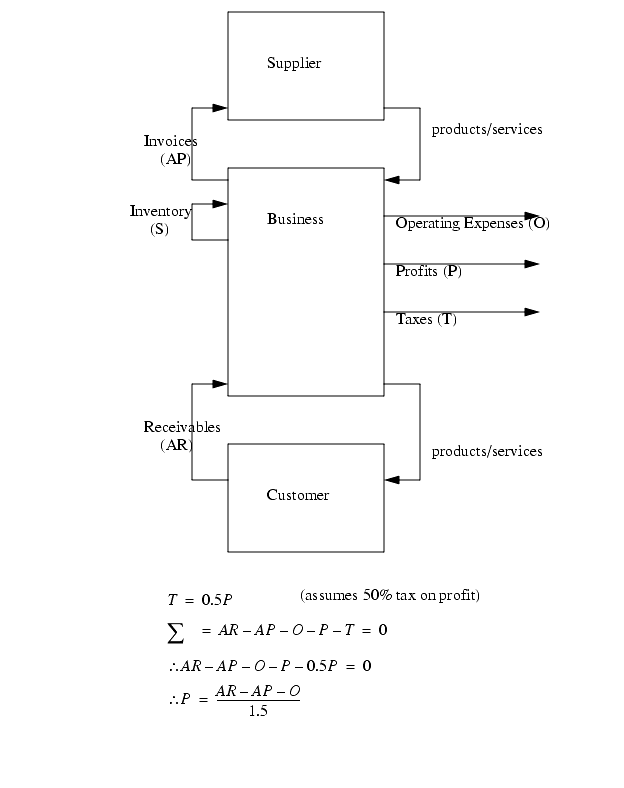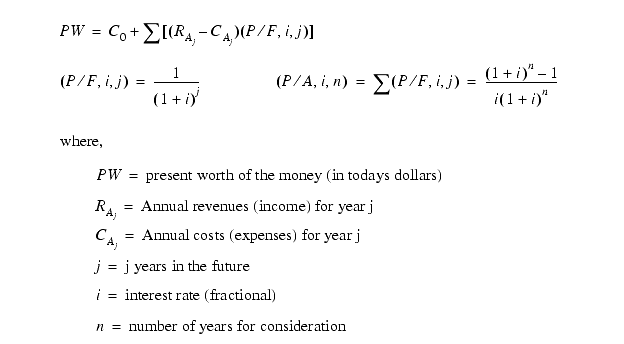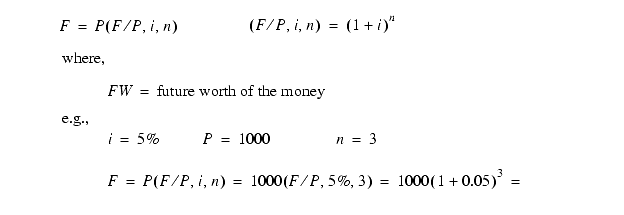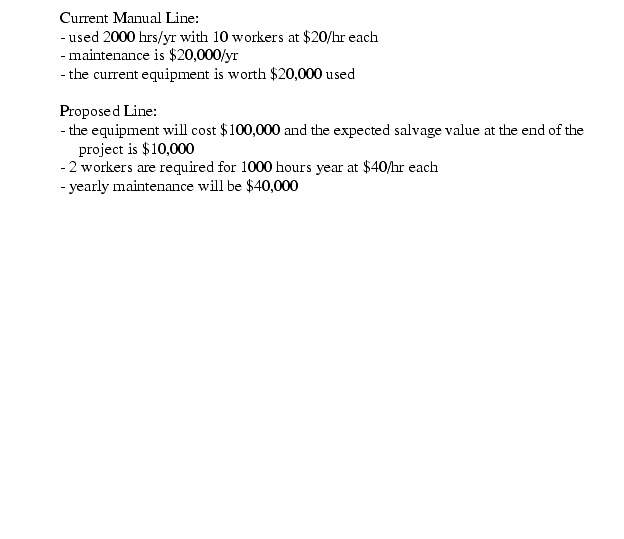
|
|
|
6.1 Introduction
������������The primary object of a public corporation is to generate the maximum amount of profit possible. A simple model is shown below.

Operating expenses include a number of factors such as,
When cash flow occurs over a number of years it is often shown with cash flow diagrams.

When considering the economic value of a decision, one method is the payback period.

Simple estimates for the initial investment and yearly savings are,

There are clearly more factors than can be considered, including,
The simple models ignore the conversion between present value and future value. (ie, money now is worth more than the same amount of money later)

The future value of money can be evaluated using,

Quite often a Rate of Return (ROR) will be specified by management. This is used in place of interest rates, and can include a companies value for the money. This will always be higher than the typical prime interest rate.
So far we haven't considered the effects of taxes. Basically corporate taxes are applied to profits. Therefore we attempt to distribute expenses evenly across the life of a project (even though the majority of the money has been spent in the first year). This distribution is known as depreciation.

Methods for depreciation are specified in the tax laws. One method is straight line depreciation.

Another methods is the accelerated cost recovery (ACRS) method that is based on US tax law. A similar version is the Modified ACRS (MACRS) system.

The 'book value' for an item is calcuated as,

Rate of Return (ROR) Analysis -

Present worth analysis shifts all of the future costs and incomes into a present day sum.
Benefit Cost Analysis for chosing between alternatives, All costs must be converted to the present values.



Consider an assembly line that is currently in use, and the system proposed to replace it. The product line is expected to last 5 years, and then be sold off. The corporate tax rate is 50% and the company policy is to require a 17% rate of return. Should we keep the old line, or install the new one?

Search for More: |

Custom Search
|

|